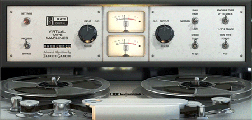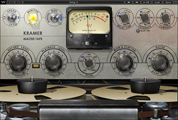Warming Up Your Digital Mixes
 So you’ve just recorded and mixed your latest song digitally in Logic or ProTools, and gotten every little detail just the way you want it. But something, you decide, is “missing” from your mix. And it’s not just that — something actually seems to be wrong with it. Your ears detect it, and complain to you in a language you vaguely understand, but the exact, technical nature of the problem eludes you.
So you’ve just recorded and mixed your latest song digitally in Logic or ProTools, and gotten every little detail just the way you want it. But something, you decide, is “missing” from your mix. And it’s not just that — something actually seems to be wrong with it. Your ears detect it, and complain to you in a language you vaguely understand, but the exact, technical nature of the problem eludes you.
It’s the bane of digital recording.
Despite the obvious virtues of digital audio — pristine fidelity, ease of tracking, automated mixing — the modern studio can produce music that sounds sterile and cold, and fail at the most basic task of record-making: pleasing the human ear. It doesn’t matter how stunning the frequency response is, in other words, if it sounds bad. This is often bemoaned as the loss of “analog warmth.”
Digital recording is a lot like point-and-shoot digital photography. What you hear (or see) is essentially what you get. But analog? It’s more like an impressionist painting, full of rich color and blurred edges.
This is why museums hang more paintings than snapshots.
Making digital work for you
 First, no amount of sweet sound descending like choirs of angels to your rig will alter the unforgiving nature of digital audio. Your digital studio will reproduce music just as it receives it, and that includes spiky transients and other unmusical sounds. Your job is to take the signal you capture and make it pleasing to the ear.
First, no amount of sweet sound descending like choirs of angels to your rig will alter the unforgiving nature of digital audio. Your digital studio will reproduce music just as it receives it, and that includes spiky transients and other unmusical sounds. Your job is to take the signal you capture and make it pleasing to the ear.
Second, it is the operator of the equipment, and not the equipment itself, that produces the magic in a mix.
In the Wampus studio we’ve been checking out two tape-emulation plugins — Kramer Master Tape and Slate Digital Virtual Tape Machines. As their names suggest, they infuse digital audio with a semblance of analog warmth and harmonics. They transform harsh, matter-of-fact bursts of sound into rich, shimmering tones. The Kramer is especially impressive on individual tracks, with a creamy tape delay that sounds as smooth as butter. The Slate Digital excels on the master channel, printing sparkling sonics to 1/2-inch, 2-track “tape” at 30 inches per second. Either plugin can be inserted on individual tracks or on the master, in any number of instances. How you use them is up to you.
You’ll dial up these excellent plugins to play around with bias, tape speed, saturation, wow and flutter, and tape noise. But you’ll keep them for the transparency and the harmonics. And the warmth.
Use them on your next project at Wampus.
(Wampus is not affiliated with Kramer, Slate Digital, or any other manufacturer.)

I use the Slate
If I didn’t suck, someone might hear that warmth
Mr. M., you and I seem to use the same (sometimes obscure) gear… again and again. We must ransack the halls of art and science for an explanation, for this dwarfs chance.
I love the Slate. You can barely hear it working, it seems. But when you take it away… it feels like your dog died.